Abstract
Children responded on a single operandum to produce marbles or candy within a two-component multiple schedule and then were allowed to choose which component was in effect. Experiment I examined the effects of exchanging marbles after sessions for subject-selected or experimenter-selected candy. Rate of response to the single operandum was not affected. However, when the subjects could switch components, they spent the majority of time and responded at somewhat higher rates in a component where marbles were exchangable for subject-selected candy. Experiment II examined the effects of eliminating the immediate marble consequence for responses. Rate of response to the single operandum was not affected. However, when subjects could switch components they spent more time in a component where immediate marble consequences were available for responses, than where no immediate marble consequences were available.
Full text
PDF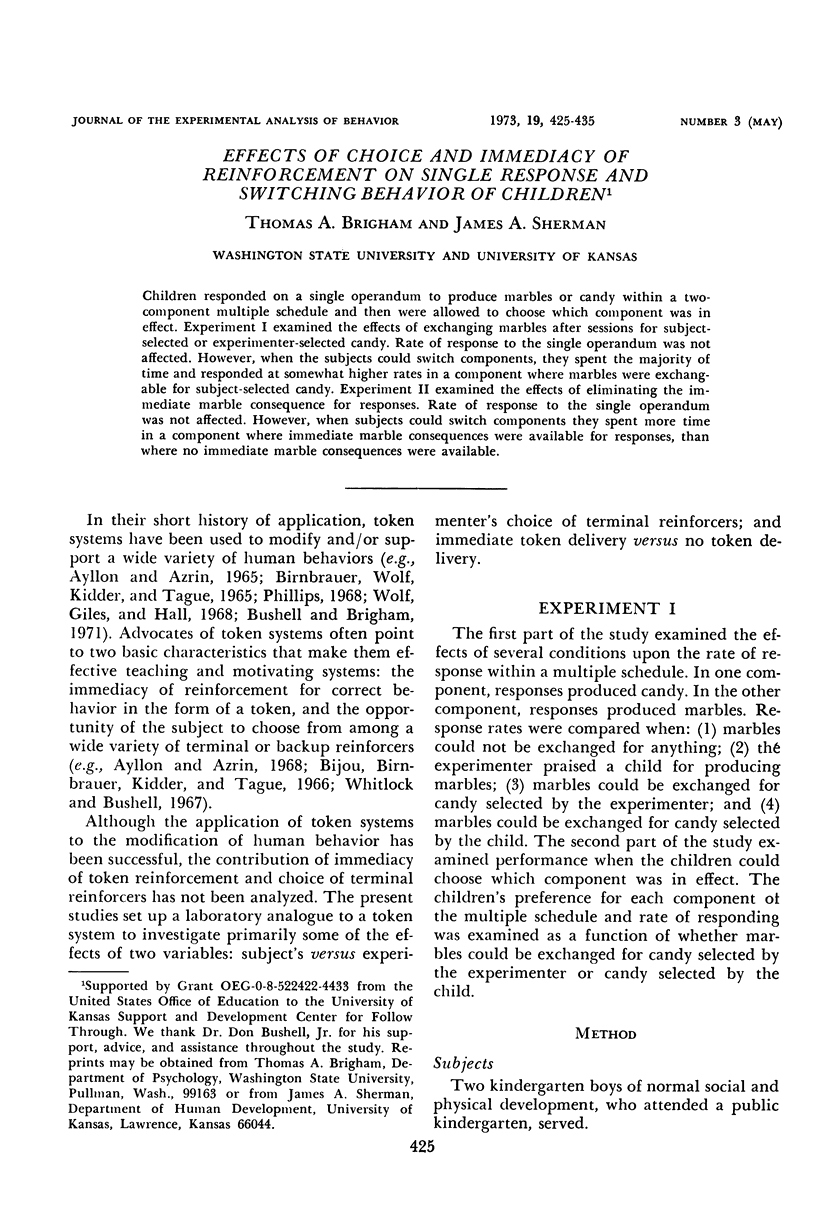
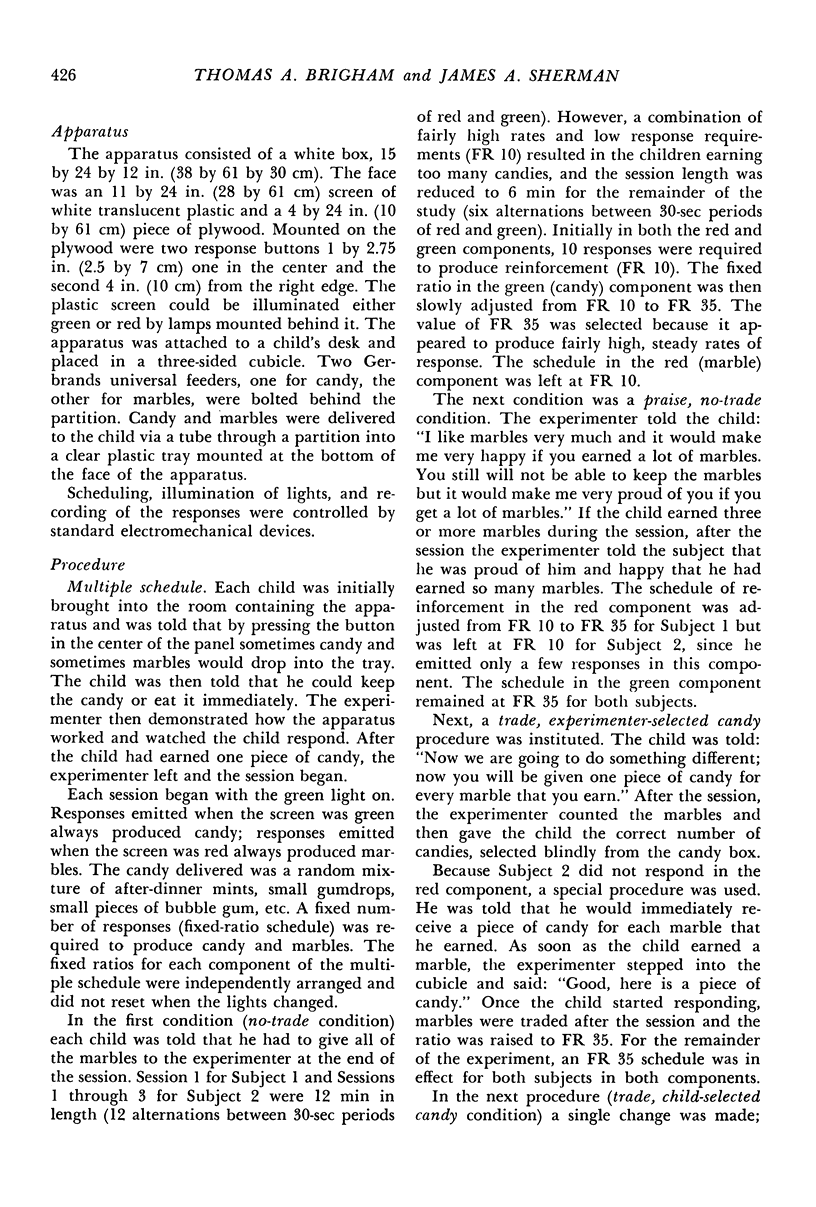
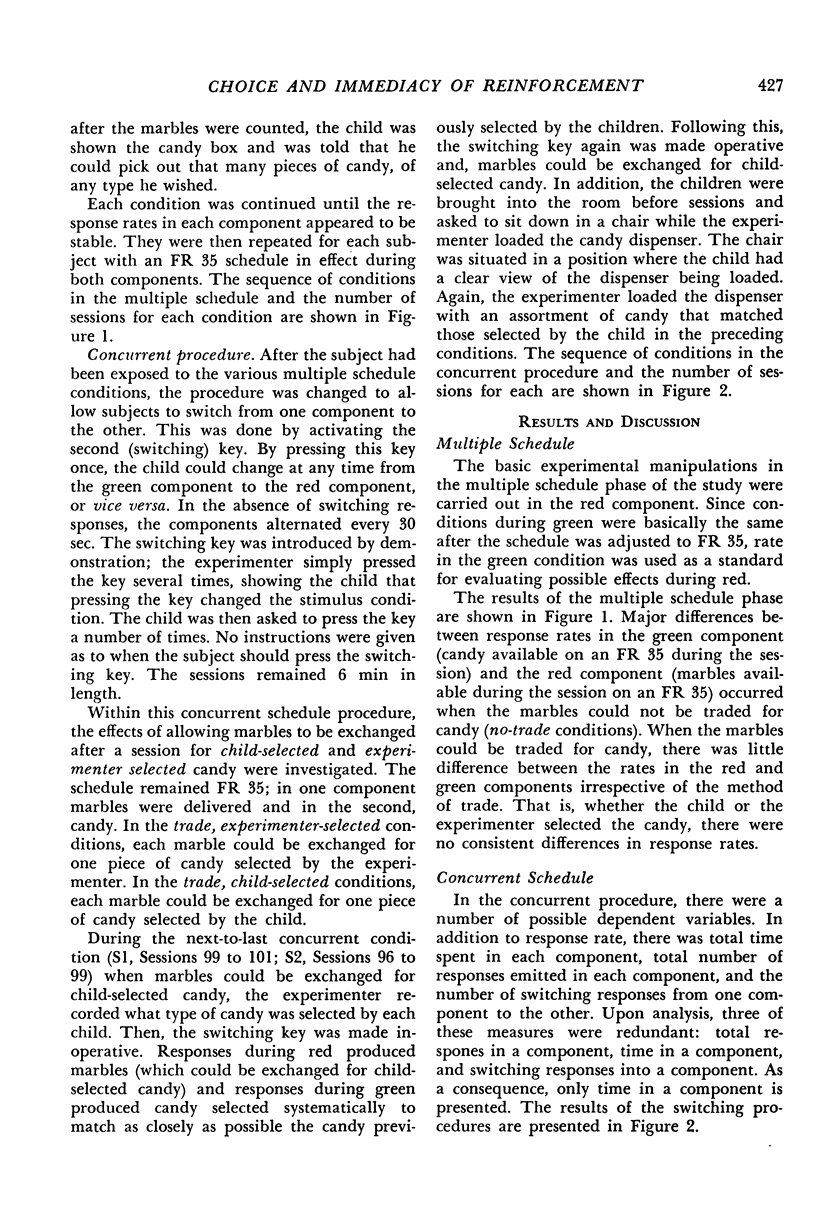

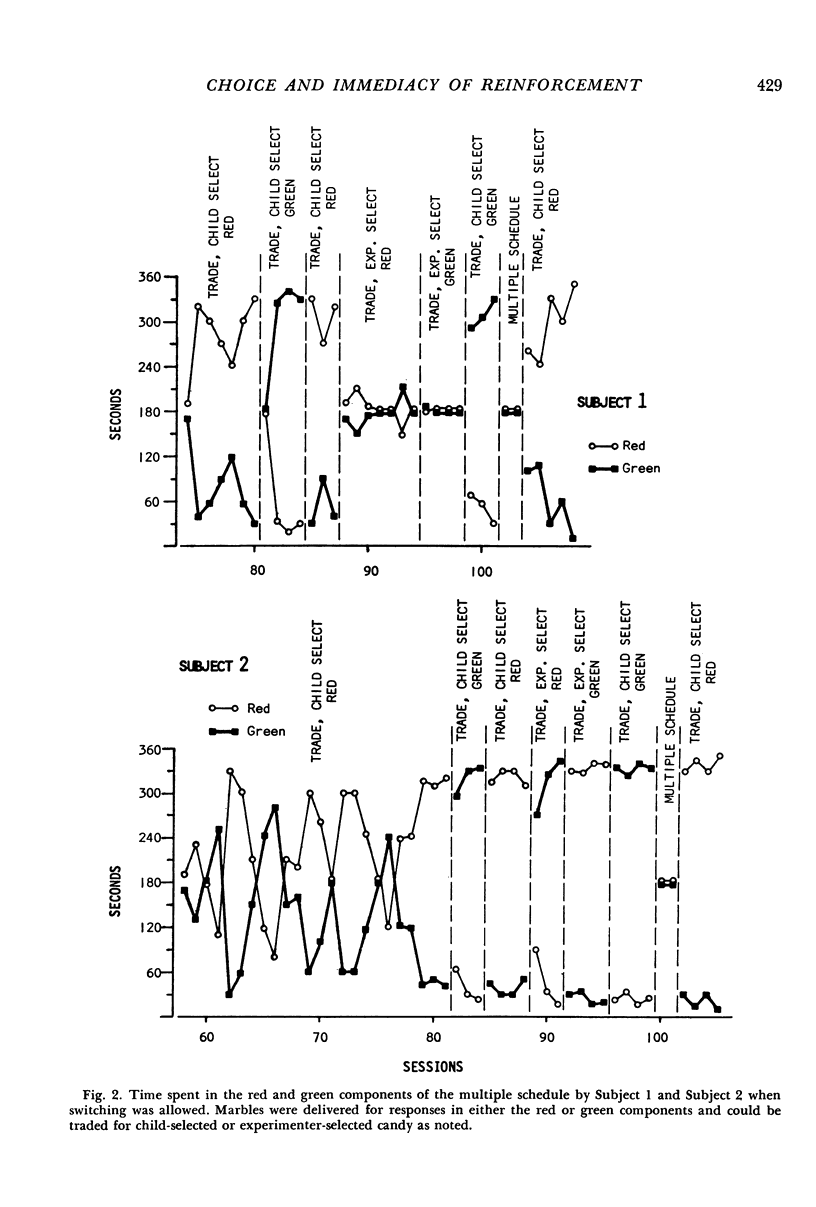
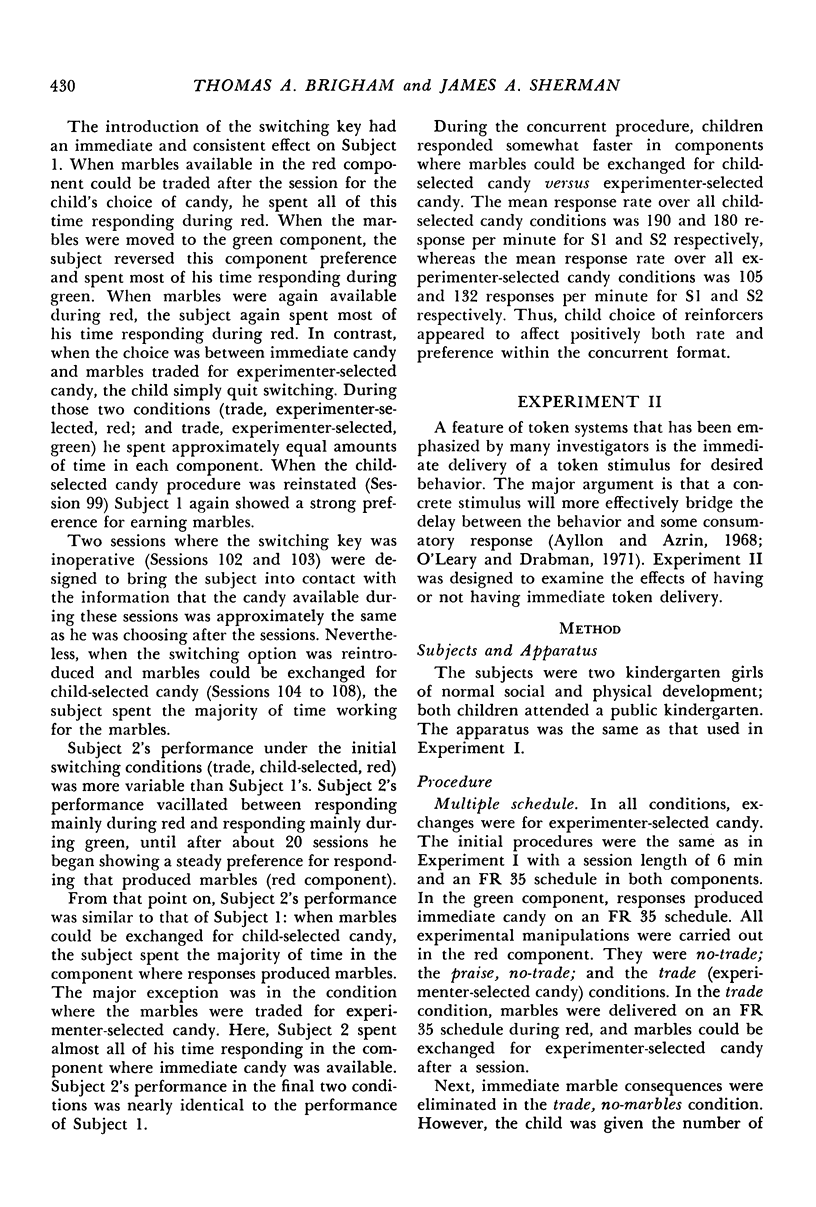
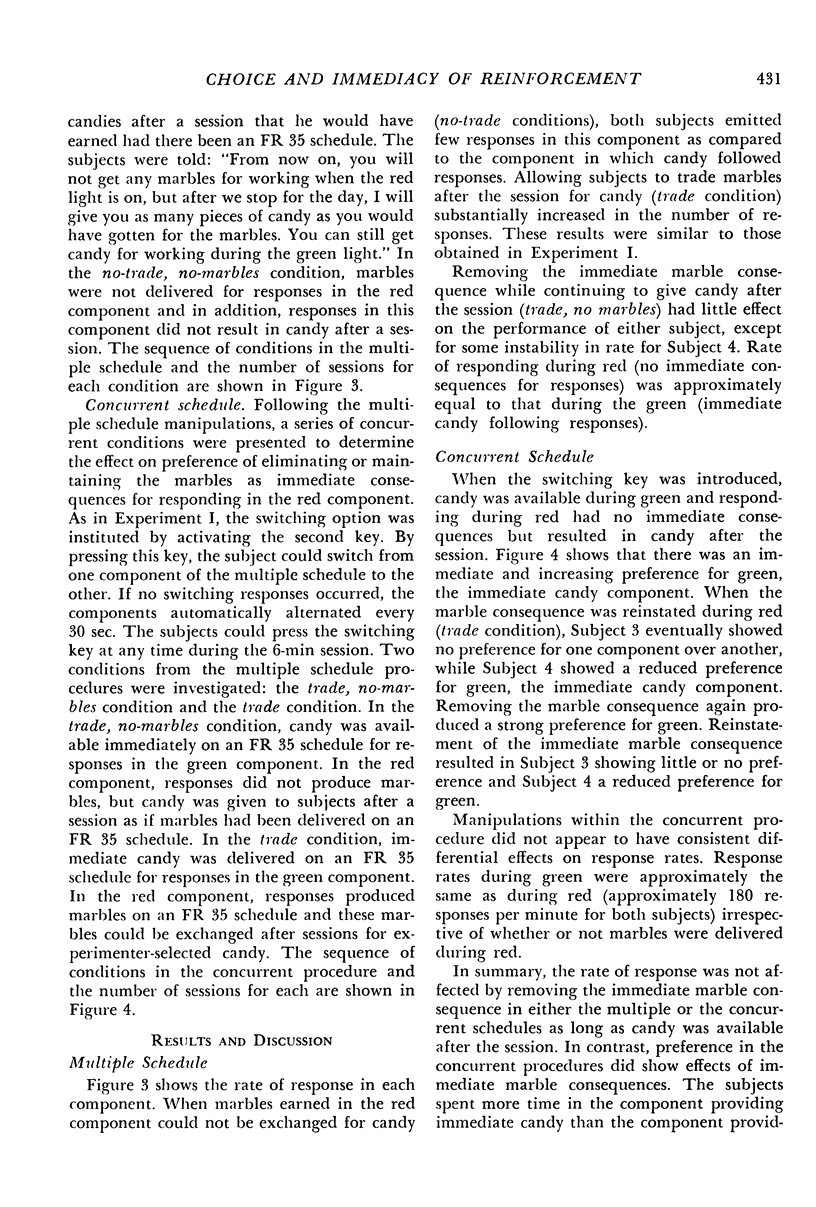
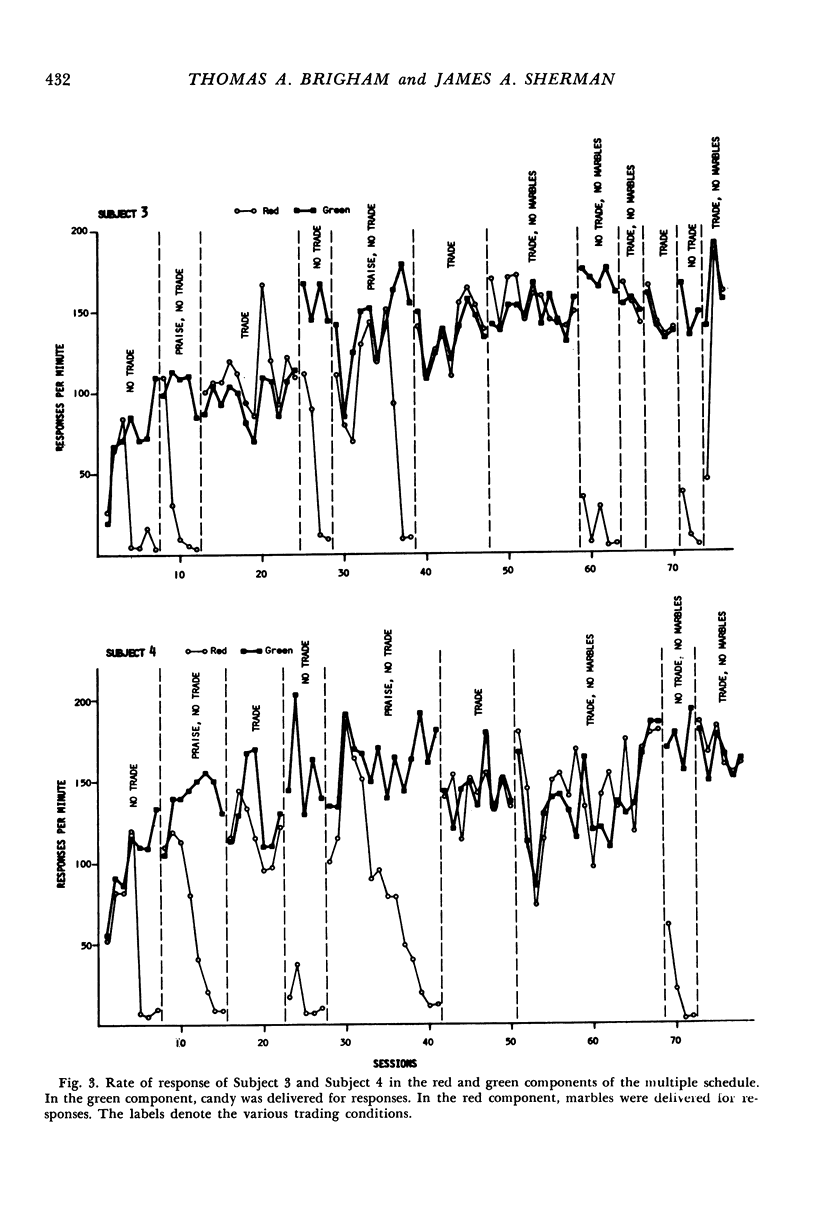
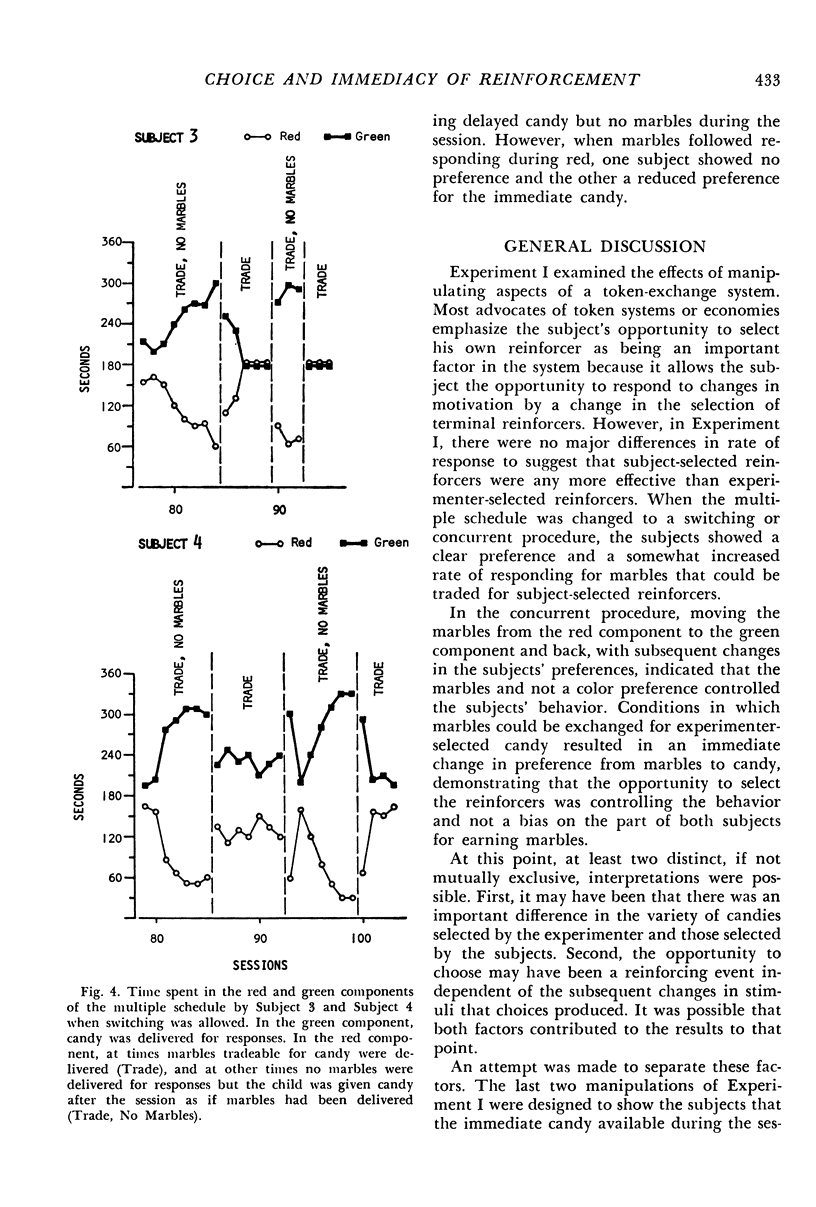
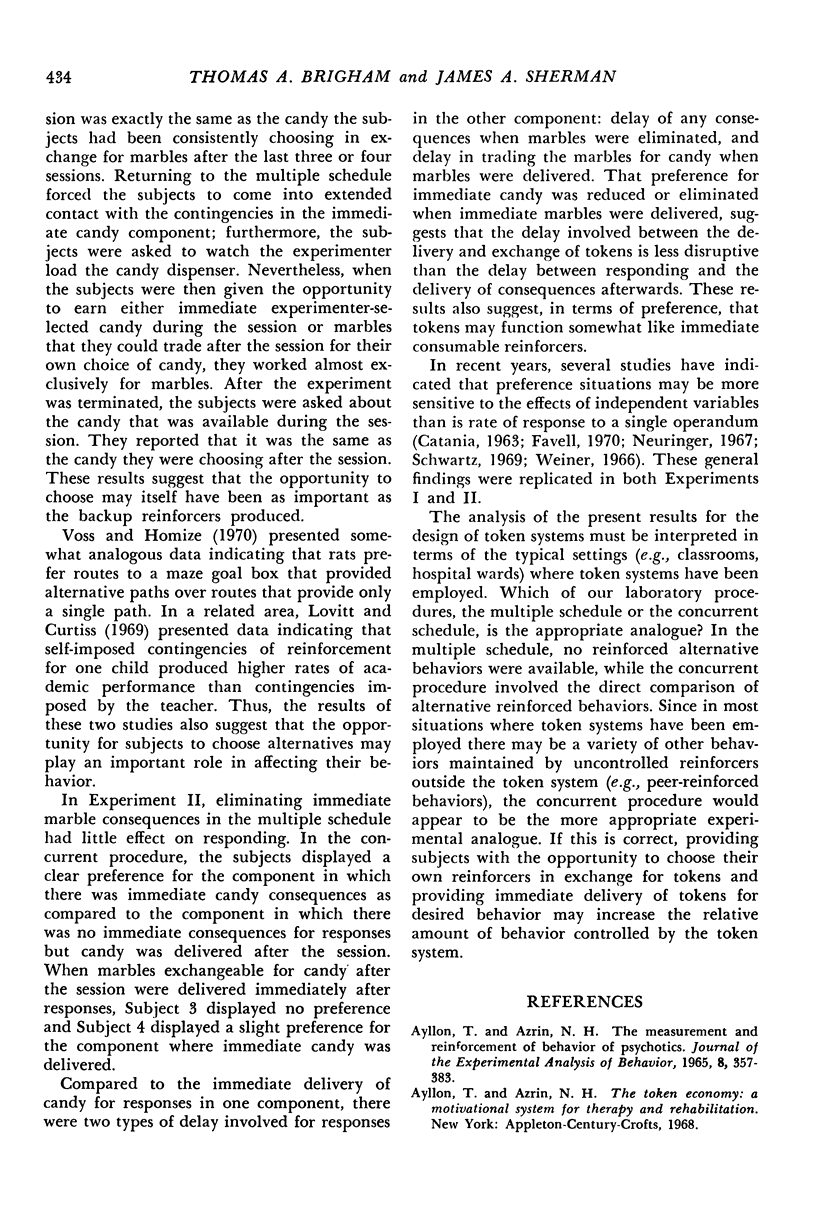
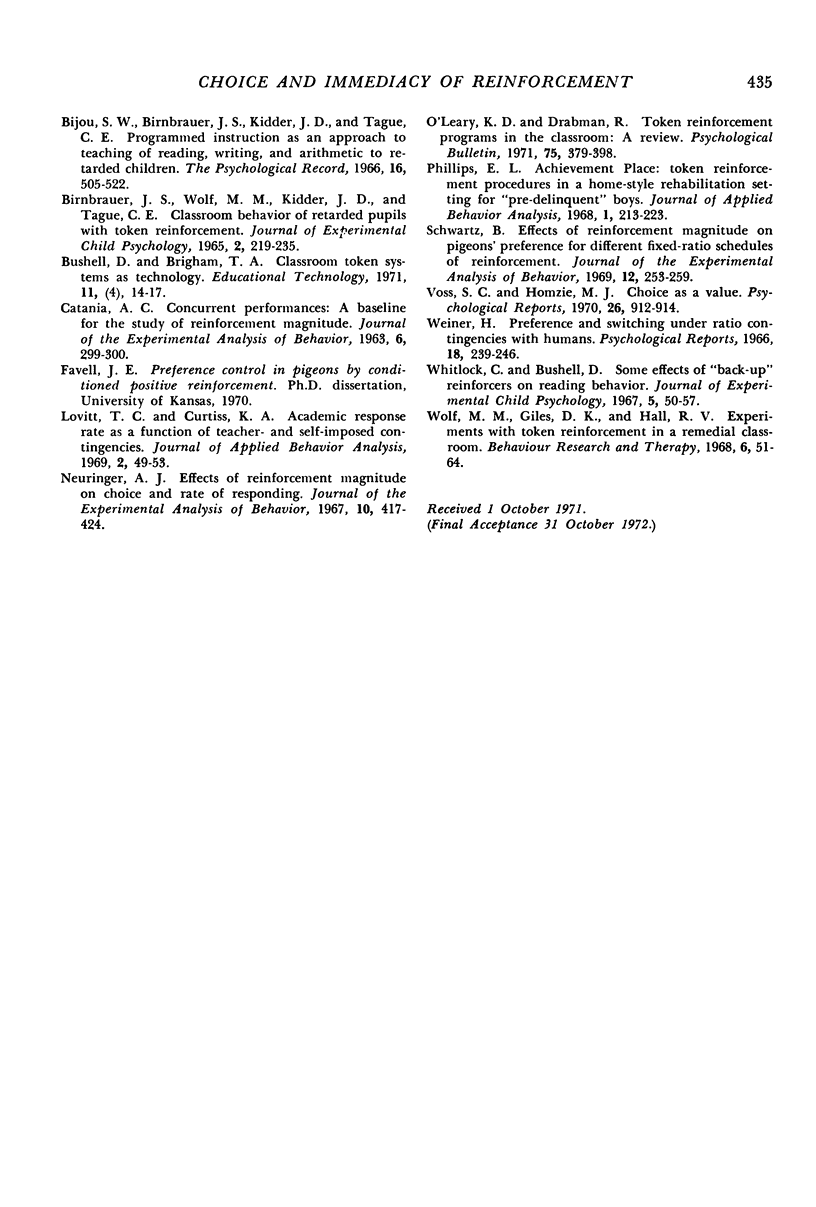
Selected References
These references are in PubMed. This may not be the complete list of references from this article.
- Ayllon T., Azrin N. H. The measurement and reinforcement of behavior of psychotics. J Exp Anal Behav. 1965 Nov;8(6):357–383. doi: 10.1901/jeab.1965.8-357. [DOI] [PMC free article] [PubMed] [Google Scholar]
- CATANIA A. C. Concurrent performances: a baseline for the study of reinforcement magnitude. J Exp Anal Behav. 1963 Apr;6:299–300. doi: 10.1901/jeab.1963.6-299. [DOI] [PMC free article] [PubMed] [Google Scholar]
- Lovitt T. C., Curtiss K. A. Academic response rate as a function of teacher- and self-imposed contingencies. J Appl Behav Anal. 1969 Spring;2(1):49–53. doi: 10.1901/jaba.1969.2-49. [DOI] [PMC free article] [PubMed] [Google Scholar]
- Neuringer A. J. Effects of reinforcement magnitude on choice and rate of responding. J Exp Anal Behav. 1967 Sep;10(5):417–424. doi: 10.1901/jeab.1967.10-417. [DOI] [PMC free article] [PubMed] [Google Scholar]
- Phillips E. L. Achievement Place: token reinforcement procedures in a home-style rehabilitation setting for "pre-delinquent" boys. J Appl Behav Anal. 1968 Fall;1(3):213–223. doi: 10.1901/jaba.1968.1-213. [DOI] [PMC free article] [PubMed] [Google Scholar]
- Schwartz B. Effects of reinforcement magnitude on pigeons' preference for different fixed-ratio schedules of reinforcement. J Exp Anal Behav. 1969 Mar;12(2):253–259. doi: 10.1901/jeab.1969.12-253. [DOI] [PMC free article] [PubMed] [Google Scholar]
- Weiner H. Preference and switching under ratio contingencies with humans. Psychol Rep. 1966 Feb;18(1):239–246. doi: 10.2466/pr0.1966.18.1.239. [DOI] [PubMed] [Google Scholar]
- Wolf M. M., Giles D. K., Hall R. V. Experiments with token reinforcement in a remedial classroom. Behav Res Ther. 1968 Feb;6(1):51–64. doi: 10.1016/0005-7967(68)90042-9. [DOI] [PubMed] [Google Scholar]


